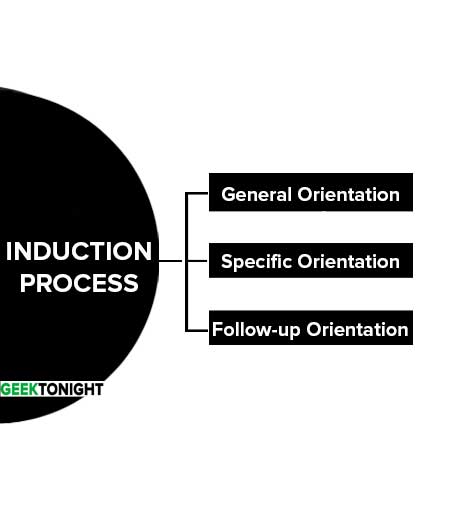What is Employee Induction?
Induction is a process of introduction of a person to the job and the organization. Induction is important as it serves the purpose of removing fears, creating a good impression and acts as a valuable source of information.
Table of Content
Introduction to Employee Induction
After the selection of employees, the first step is to orient them to organizational life. The induction or orientation program of an organization is a process to guide and counsel the employees to familiarize them with the job and the organization.
This process helps an organization to clarify the terms and conditions of employment, specific job requirements and also to inculcate confidence in the minds of the new entrants.
For example Induction Training in India:
- 1. Aptech: The company takes its new entrants through a structured induction training program. The one-day program includes a briefing on the company’s market position, the business it is in, its functioning style, its organizational structure and its HR policies. The entrants are also familiarized with what others do, before being deputed to their own departments.
A six-month behavioral training is also offered in team building, self-development, customer-sensitivity etc. Finally, the recruits are put through an appraisal process to gauge fitment and progress. - Maruti Udyog: The company customizes its initiation programs to suit the profile of the new recruit. For engineers, the program is offered in four parts:
1. Familiarize with various functions and meet division heads.
2. Work on the shop floor.
3. Work at various other departments.
4. Work finally in departments for about two months, where they will eventually work. - Standard Chartered Bank: The management trainees are picked from premium B-schools and undergo induction training for about 6 months. During this period, the trainees spend time in the various divisions of the bank to get a holistic view of the bank’s operations and get a chance to meet each of the bank’s business heads.
A two-day session dedicated to team-building is also conducted thereafter. After taking charge of the job, the new recruits have to attend a review session about the job itself.
Objectives of Employee Induction
General objectives of employee induction are:
- To introduce new employees with the organizational environment, exposing them to the mission, history and traditions of the organization, its achievements and future challenges, its personnel policy and expectations from the new employees.
- To create a positive attitude in the minds of the new employees.
- To create proper awareness in the new employees, enabling them to understand the business of the organization.
- To provide opportunity to interact with other fellow employees and also with other managerial employees of the organization.
It is a systematic and comprehensive approach to orienting a new employee to help them get “on board”. There are two high-level goals of the on boarding process: To make new employees feel welcome and comfortable in their new surroundings.
To minimize the time before new employees are productive members of their new workgroup. A good induction program should contain the following areas which are conveniently distributed under organization’s point of view and employee’s point of view
Organization’s Point of View:
- History, mission, objectives and philosophy of the organization.
- Its product, production process, operations involved, state of technology.
- Its past achievements, present status and future growth plan.
- Structure of the organization and the functions of different departments.
- Delegation of authority and decision-making process.
- Personnel policies, other miscellaneous policies, practices and regulations.
- Job descriptions and responsibilities.
- Expectations from new employees.
Employee’s Point of View
- Job responsibilities
- Office procedures
- Grievance handling procedures
- Salary and perks
- Service rules governing hours of work, overtime
- Rules covering probation, confirmation, promotion opportunities, transfer, etc
- Retirement and superannuation benefits
- Employee services and welfare activities
- Employee’s participation in small group activities, question schemes
- Performance evaluation
Induction Process
An induction process steps involves:

General Orientation
It includes guided tours in different departments of an organization, introduction with fellow employees, supervisors and executives, information about the organizations’ mission, philosophy, achievements and future plans, etc.
Some organizations have their printed manuals, which they give to their new employees to orient them with their induction training program for a week or so.
The purpose of such a general orientation program is to build a sense of pride in the minds of the new employees and also to create an interest in them about the organization.
Specific Orientation
This is intended to help new employees to get acclimatized with their new work environment. The supervisor or the departmental boss of the employee takes him to his place of work and imparts vocational guidance for his particular nature of work.
He is also told about the technology, environment and other facilities available in the organization, prevailing practices and customs and specific expectations from an employee.
For executives and managerial employees, targets and key result areas for each of them are given to make them aware of what organization expects from them.
Follow-up Orientation
This orientation is conducted sometime after the initial induction of an employee, i.e. preferably within a period of six months or so.
The purpose of such orientation is to give guidance and counsel to the employees to ensure that they are reasonably satisfied and gradually settling in the organization.
What is Placement?
After the initial program is over, an employee is put to a specific job, for which he has been selected. Most of the organizations put new employees on probation for a specified period after which they are confirmed or made permanent, provided they match the organizational requirements.
The personnel department periodically reviews the progress of such employees getting feedback on their performance from their controlling authority. Some organizations have also a system to extend the probationary period if the employees fail to match to the organizational expectations. Such placement is known as ‘differential placement’.
Placement is defined as assigning employees jobs for which they have been identified as suitable based on the selection techniques. But such a definition would be meaningless if a particular employee is recruited against a particular vacancy.
Generally, the question of placement arises when a group of trainees are recruited. Organizations, to identify the true potentiality of an employee, in such cases, make provision for short-term placement, during which phase, employees are allowed to work on different jobs, through a systematic job rotation program. However, at a later stage, permanent placement is effected matching the employees’ competence, knowledge, skill and job interest.
Human Resources Tutorial
(Click on Topic to Read)
Human Resource Planning
Go On, Share & Help your Friend
Did we miss something in Human Resource or You want something More? Come on! Tell us what you think about our post on Employee Induction in the comments section and Share this post with your friends.
Human Resources Tutorial
(Click on Topic to Read)







